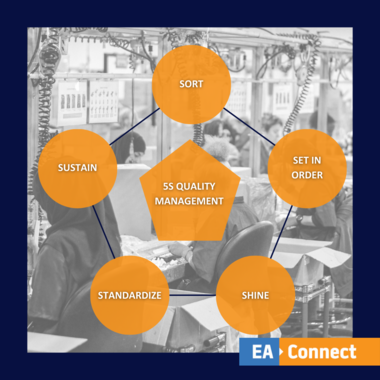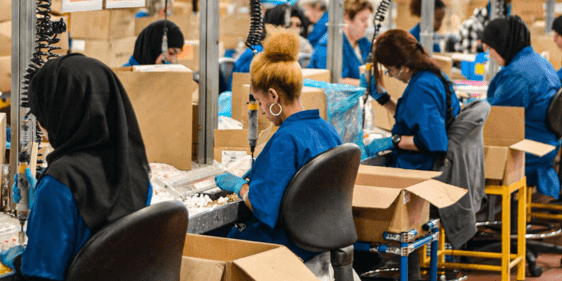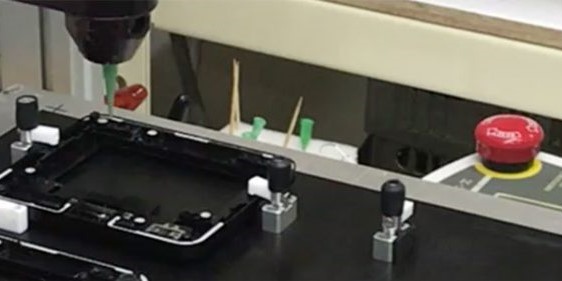In the quest for efficiency and effectiveness in manufacturing processes, the 5S methodology has proven to be a powerful tool.
The 5 S’s, coming from 5 Japanese words, stand for Sort, Set in order, Shine, Standardise, and Sustain. With these 5 steps you will remove all excess and disturbing clutter resulting in a more effective workstation.
The methodology was originally developed to enhance productivity and quality, as well as to improve safety in the manufacturing sector. Nevertheless, it is now widely used across industries.
In this article, you will be taken through the 5 steps of the methodology, as well as some of the advantages you can benefit from if you implement the system.

1. Sort
The first 'S' in 5S is all about decluttering and organising. The idea is to identify and eliminate any unnecessary items, tools, and materials from the workspace. This step not only creates a cleaner, safer environment but also helps in identifying and addressing inefficiencies.
2. Set in order
Once you've decluttered your workspace, it's time to establish a new layout. The layout must be logical and efficient. This means giving tools and materials a designated place in a way that minimises wasted time and movement.
When everything has a place and is easily accessible, you reduce the risk of errors and increase productivity. This step is about optimising the workflow and reducing any unnecessary steps.
3. Shine
A clean workspace is a safe and productive workspace. Regular cleaning and maintenance are vital to the 5S methodology. Shine involves not only cleaning but also maintaining equipment so that all tools are working to their best. This will reduce the amount of quality mistakes.
4. Standardise
Consistency is key to quality management. The fourth 'S' focuses on creating and maintaining standardized work processes and procedures. This ensures that everyone understands their roles and responsibilities and performs tasks consistently, which allows them to make fewer mistakes in their job.
5. Sustain
The final 'S' is about making all the improvements permanent in the production line. To be sustainable continuous training, regular audits, and ongoing efforts to maintain the gains are essential. It's not enough to implement 5S once; you must commit to an ongoing practice to reach the full benefits.
The benefits of 5S quality management
Implementing 5S quality management can offer you numerous advantages. These includes:
- Improved efficiency: By reducing waste and optimising workflows, you can accomplish tasks quicker and with fewer resources.
- Enhanced quality: Standardised processes and procedures lead to a reduction in errors and defects, resulting in products of higher quality.
- Increased safety: A clean and organised workspace reduces the risk of accidents and injuries.
- Cost reduction: Efficiency improvements often lead to cost savings, both in terms of time and resources.
The ultimate 5S guide for OEMs
Are you implementing the 5S principles in your business? We have written our experiences down in an e-book. The e-book contains explanations of each principle as well as various templates, guidelines, and examples for inspiration that you can use in your practice.




